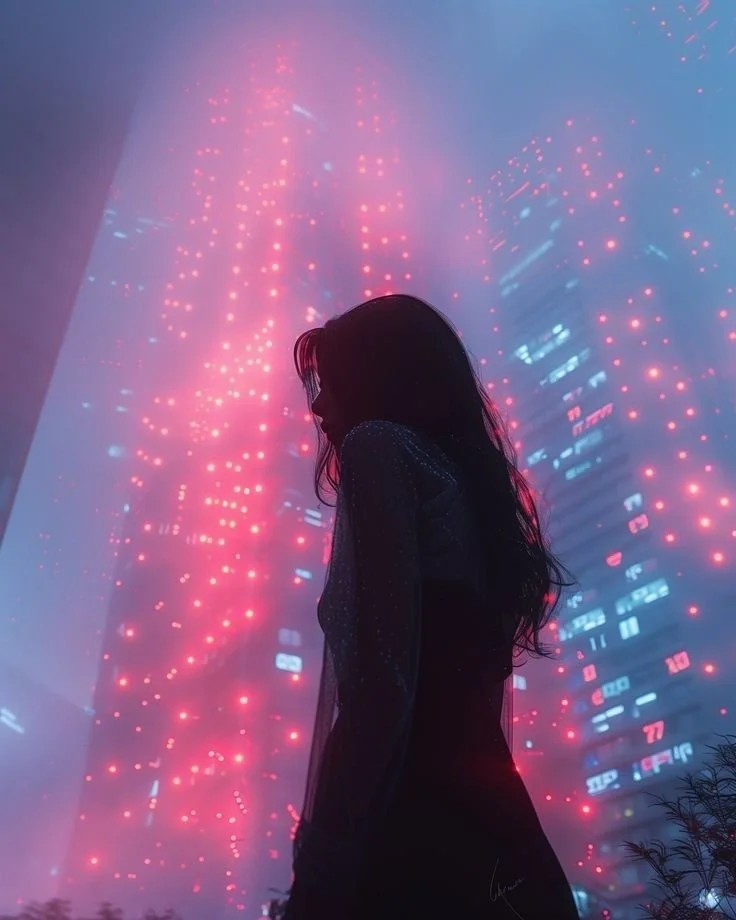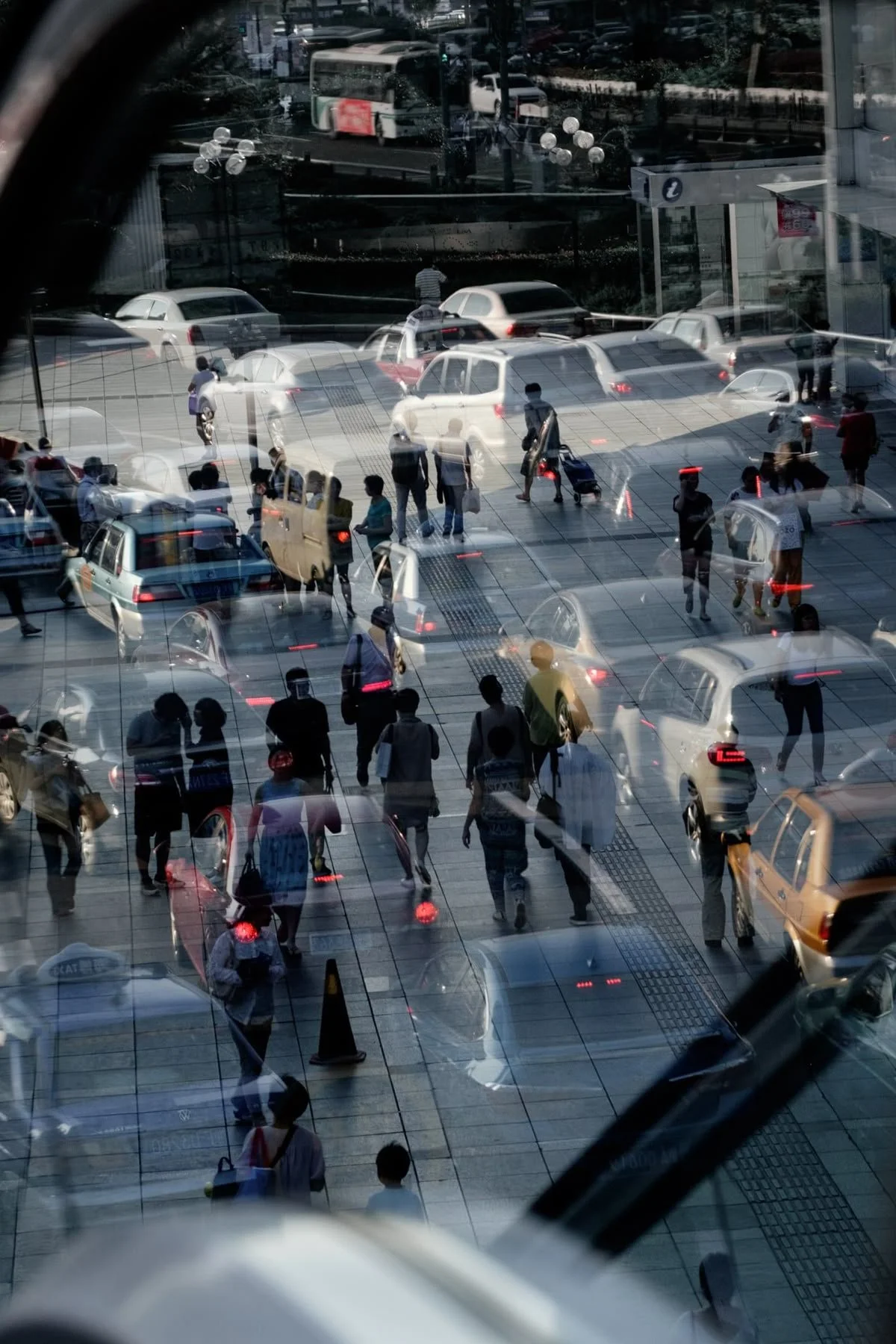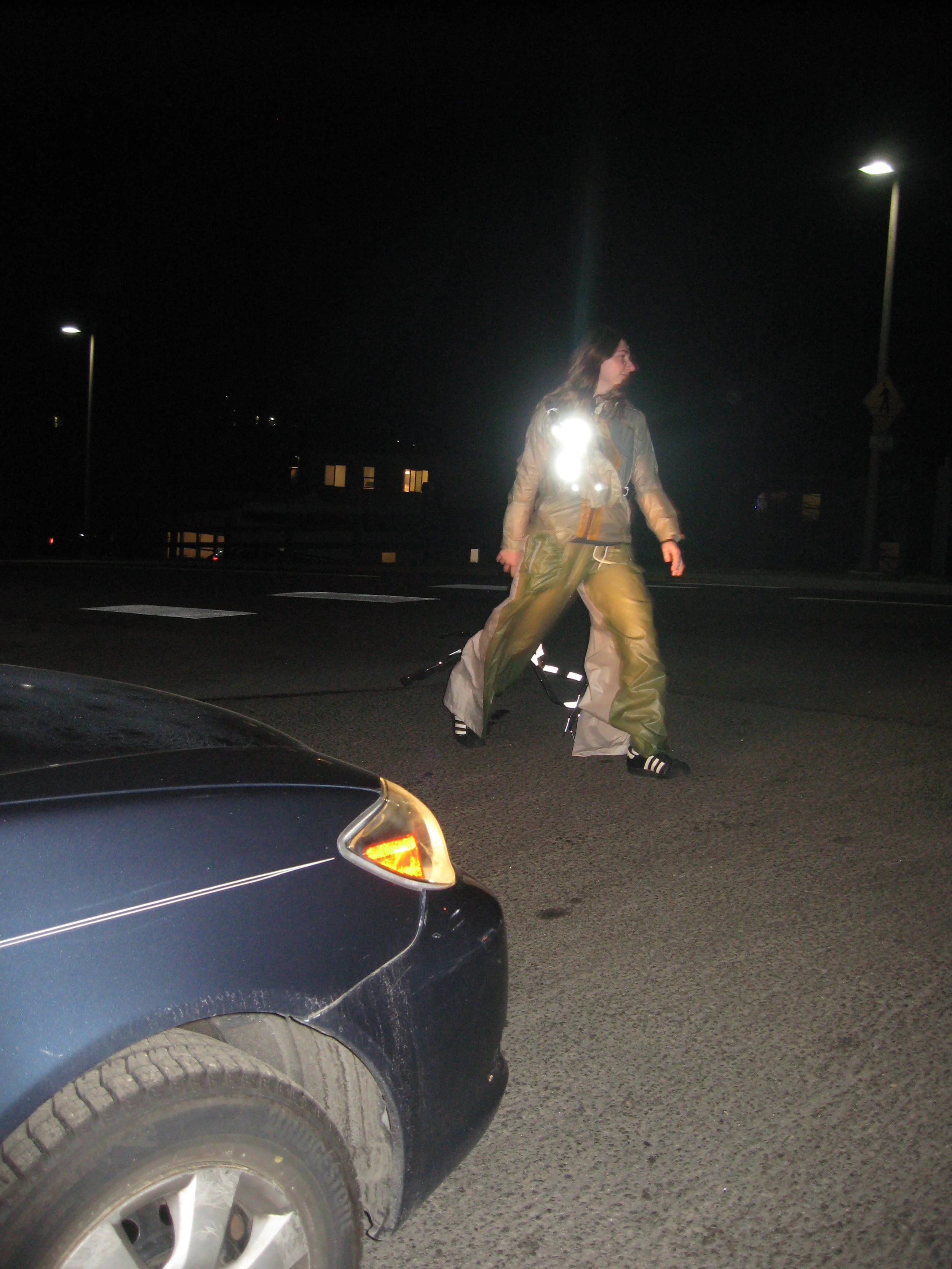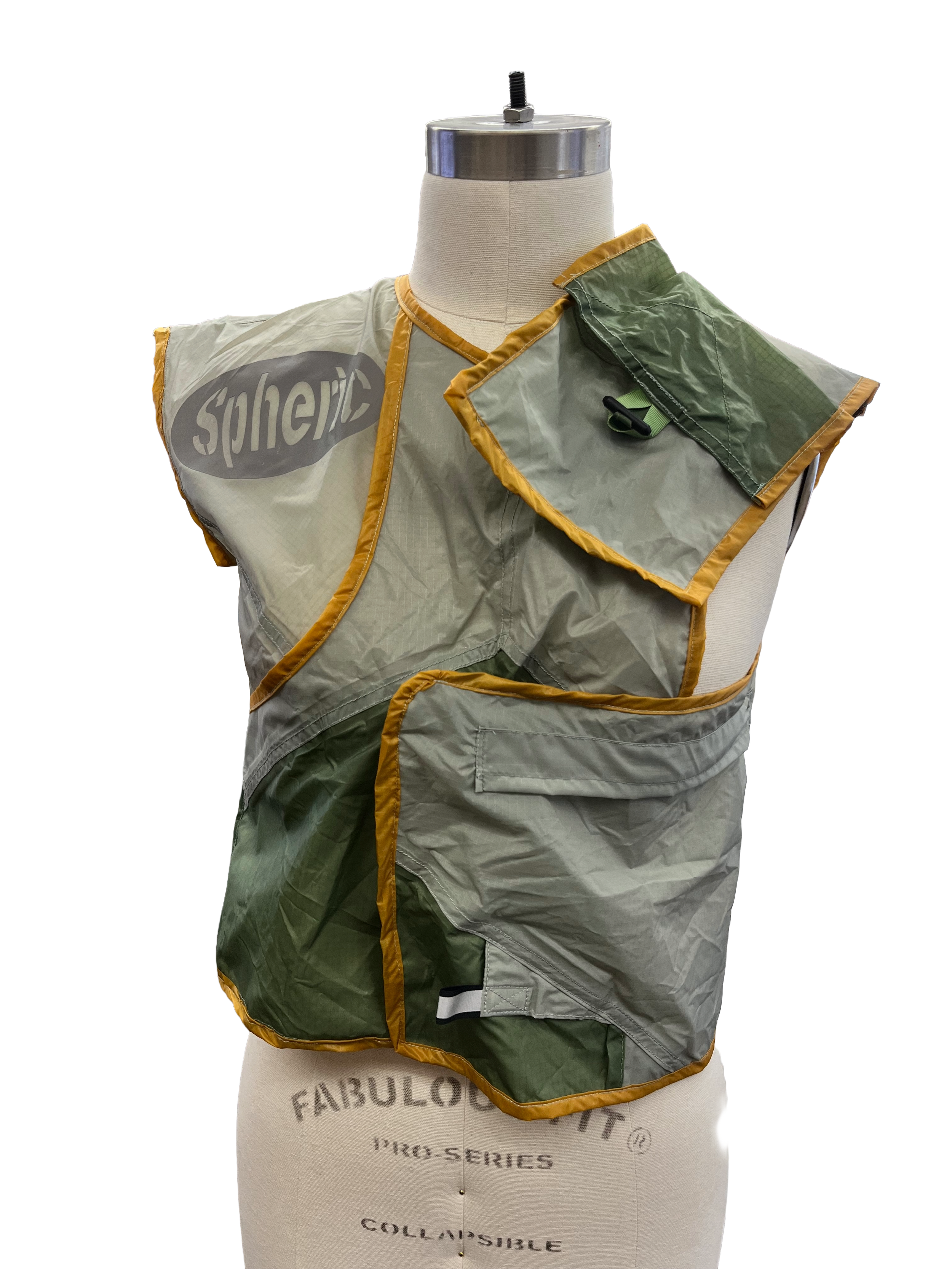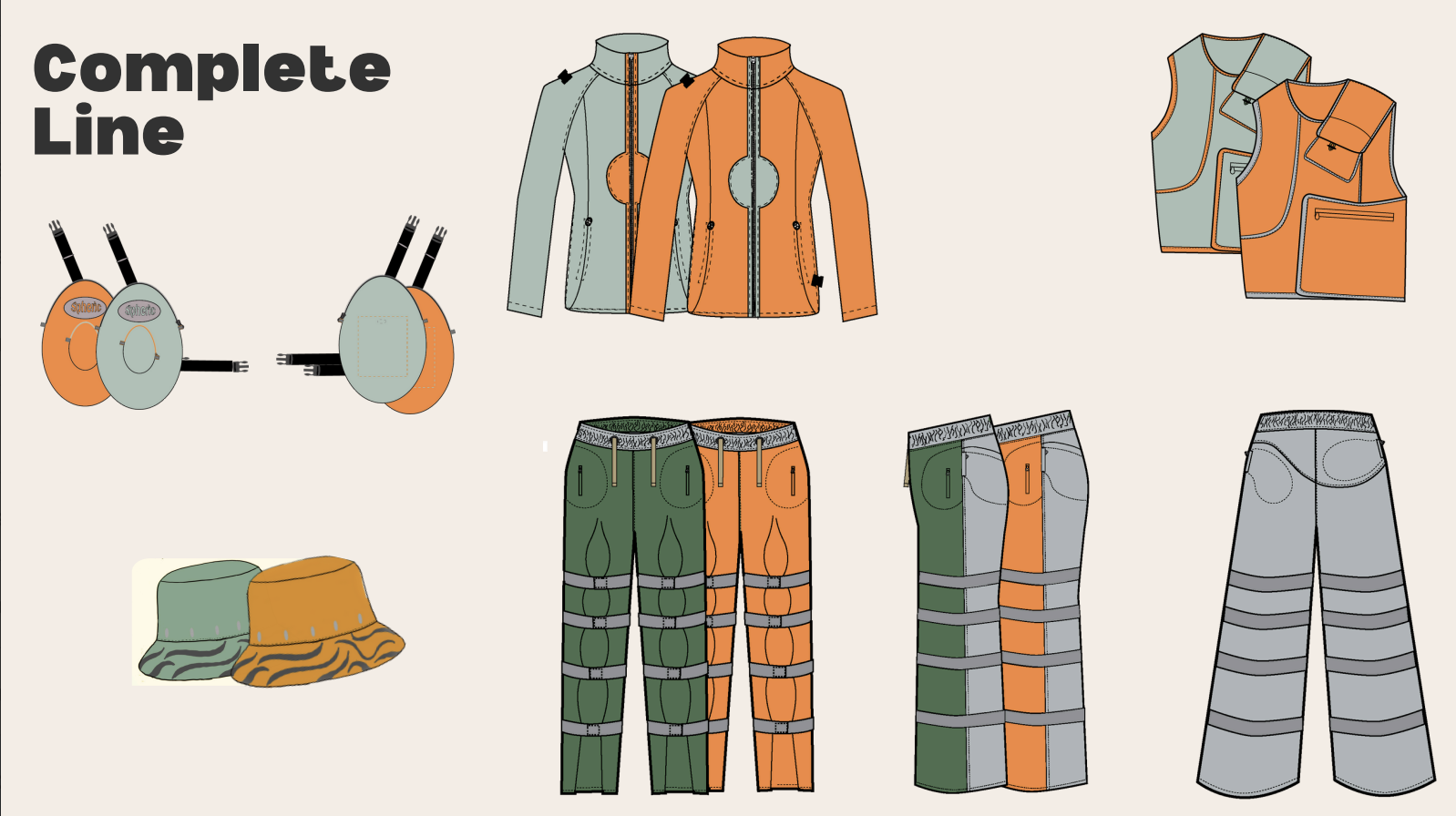Spheric
created by Paige Householder, Vivian Kuhner, Audrey Hawes, Shelby Davis, and Neida Romo
Spheric is a collaborative capsule collection envisioning the wardrobe of the urban commuter in 2050. Through hand-drafted silhouettes, upcycled tents, and laser-cut reflective vinyl, the team reimagined utility wear with a futuristic and sustainable edge.
The Spheric consumer is a 30–50-year-old urban commuter living in Portland, Oregon in the year 2050. Navigating a city reshaped by climate change, they need garments that are as adaptable as their lifestyle—offering protection, mobility, and smart function. Whether biking through rainstorms or hopping between transit lines, they prioritize sustainability and seek out versatile pieces that support both their values and their day-to-day movement through an unpredictable urban landscape.
Consumer Analysis
By 2050, society has adapted to the realities of a changing climate. Cities like Portland have become more compact, green, and tech-integrated, designed to withstand rising temperatures, unpredictable weather, and limited resources. Urban infrastructure prioritizes sustainability by incorporating elements like vertical gardens, solar-paneled transit hubs, walkable micro-communities, and widespread use of renewable energy.
Daily life is more fluid and mobile. Commuters rely on shared electric transit, bikes, and autonomous vehicles to navigate cities that now emphasize pedestrian access and environmental harmony. Extreme weather gear has become a wardrobe essential, and clothing is expected to do more: regulate temperature, protect from pollutants, and transition seamlessly between work, commute, and recreation.
Socially, there’s a stronger collective focus on environmental accountability, circular economies, and technological solutions that serve people and the planet. In this future, fashion isn’t fast—it’s functional, ethical, and made to last.
Predicting the Future
Spheric
My part in the project was designing, patterning, and constructing a reflective vest with utility and adaptability in mind. Constructed from upcycled materials and hand-drafted for a streamlined fit, it features three spacious pockets, including one oversized compartment large enough to carry a laptop. Whether commuting by bike or navigating on foot, the vest combines visibility, storage, and everyday practicality in a sleek, future-ready silhouette.
The final Spheric collection brought our futuristic vision to life through a modular, head-to-toe look designed for adaptability and impact. The ensemble includes a pair of utility pants, a reflective vest, a tech-integrated jacket and hat that both light up using fiber optics for increased visibility, and a convertible bag that securely buckles to the jacket for hands-free commuting. Each piece was designed with both form and function in mind— merging weather-resilient materials, upcycled textiles, and thoughtful construction to meet the needs of a 2050 urban commuter navigating a climate-affected city.
